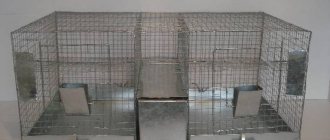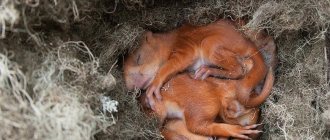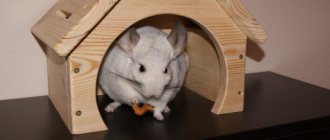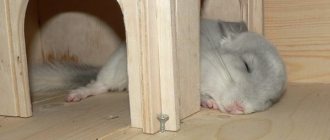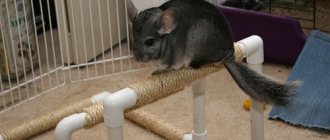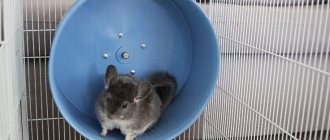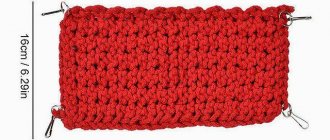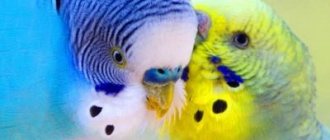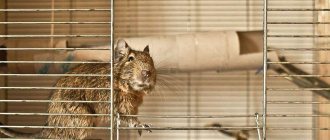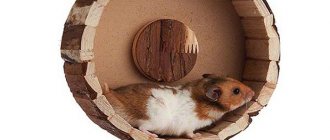Before buying a chinchilla, you need to take care of where it will live. Usually, for this purpose, a cage is chosen, inside which a house and other accessories are installed.
How are homemade cages and houses different from those you can buy in a store? Almost everyone. After all, they will definitely be filled with warmth and care for the pet. Here you are the designer and performer. Any idea, any size plus a little effort – done! Nothing compares to something like this.
In this article we will look at how to make a cage for a chinchilla with your own hands, we will look at the best materials to choose and what ideas and manufacturing technologies exist.
Requirements
When choosing any item, there are special things that you need to pay attention to, the same with the cage. What kind of cage should a pet be comfortable in?
Primary requirements:
- spacious. Chinchillas are very active animals; they love to jump and run. Therefore, cell size is an important criterion when choosing. The pet should be comfortable;
- Made from non-toxic materials. An important criterion is the choice of material. It should not be plastic or similar materials (with the exception of a pallet);
- safe. There should be no sharp edges, wires or other dangerous elements inside the cage. Even a small wire from the wall bars, bent inward, can injure the animal;
- it should be possible to easily and safely install shelves, drinking bowls, toys and other items that your pet needs so much;
- have good ventilation;
- sufficient lighting;
- It is desirable to have a tray, this will make it easier to clean inside.
Where to put the cage
Once the cage is ready for the furry to move in, you will need to choose a suitable place to install it. This point is very important, since chinchillas are very sensitive to environmental conditions. Therefore, when choosing a place to install the cage, you need to consider the following recommendations:
- The room should be cool. The optimal temperature for keeping a chinchilla is +18-22ᵒС. When the indicator increases to +24-25ᵒC, the pet’s well-being noticeably worsens. Chinchillas naturally live in the mountains, where the climate is quite harsh, so they do not tolerate heat well.
- The air humidity in the room should be between 45-50%. The fact is that chinchillas have very thick and dense fur, which instantly gets wet in high humidity. At the same time, the fur coat of fluffies takes a very long time to dry, which often becomes the cause of colds.
- Chinchillas are very timid, they fall into a stupor at every foreign sound or at the sight of a stranger. Therefore, it is better to install the cage in an isolated, non-passable room, where no one and nothing will disturb the pet.
- It is necessary to protect the chinchilla cage from direct sunlight. Chinchillas are crepuscular animals and prefer to sleep during the day. Therefore, it is better to place the cage in a shady room. If this is not possible, it is necessary to protect the windows with thick curtains or blinds so that the sun does not interfere with the animal’s rest.
It is also worth considering that the activity of chinchillas increases noticeably at night. Therefore, people who are sensitive sleepers should avoid installing a cage with a pet in the bedroom.
To ensure that your chinchilla always feels comfortable, it is recommended to install a split system in the room with the cage. You just need to install the air conditioner in such a way that cold air does not fall directly on your pet.
Main varieties
When looking for a home for your pet, you can find different variations of cages. They differ in appearance, price and quality.
Let's look at the most common options.
From metal rods
This is the most common and very budget option. At the bottom of such a cage there is usually a tray with sawdust, which is easy to clean. It is easy to attach the necessary accessories for your pet to the mesh. But this design does not dampen noise at all; any movement in it will make sound.
Display cage
The material usually used is wood, although other models are also available. Such a cage is a real work of art and the pet becomes part of this composition. It will easily fit into the interior and complement it.
From old furniture
Masters can give a second life to any item. Unnecessary furniture in their hands turns into a beautiful display cage.
For breeding chinchillas
This design is a metal cage divided into several sections, each of which houses a pet.
Maintenance and feeding
Soviet breeders who created the domestic version of the breed tried not only to increase the weight of the animals, but also to make them less demanding in terms of keeping and feeding conditions. Let us note that they succeeded. Farmers raising chinchilla rabbits must follow several basic rules in their care:
- regularly clean cages and change bedding promptly;
- provide a balanced diet, strictly adhere to the feeding schedule;
- provide round-the-clock access to fresh drinking water (in the cold season it should be slightly heated);
- during warm periods, shade cells from direct sunlight;
- protect animals from drafts and strong winds.
Representatives of the breed are unpretentious to living conditions and, with proper care, can spend the winter in cages outside.
Thanks to the very thick undercoat, these rabbits can be kept in cages located outside even in frosty conditions. But to maintain productivity in such conditions, the calorie content of the animals’ daily diet will have to be increased by 20%.
Note that during commercial breeding, Soviet chinchillas are kept in mechanized rabbitries or sheds. In a private backyard, it is quite possible to use ordinary cages. But raising these animals in pits is not recommended
Their fur is highly prized and it is important to keep it clean at all times. It is almost impossible to achieve this with pitting maintenance.
Various vegetables help to diversify and enrich the diet of rabbits
When it comes to feeding these rabbits, everything is quite simple - the daily diet does not include any non-standard products. During the warm period, animals must be provided with fresh grass. Hay is recommended not only in winter, but also as a top dressing in summer. The animals eat grains, mixed feed, and fresh vegetables well. Please note that potatoes can only be offered to them boiled. The diet of chinchillas should include meat and bone or fish meal and vitamin and mineral supplements. From time to time, rabbits should be given young branches of bushes and trees.
In the following video, an experienced rabbit breeder talks about the features of keeping and advantages of the breed:
Dimensions
As mentioned above, size is important. How comfortable the animal will be depends on it; its health directly depends on it.
For one animal
It is advisable to choose a cage with dimensions of 80x80x50 cm. With such dimensions the pet will not feel cramped. But still, acquiring a more spacious living space will only be a plus.
For two chinchillas
The size of the cage must be at least 140x140x80cm.
For breeding
The size of the cage should be much larger than normal. Such farmer cells are an amalgamation of smaller cells. It is desirable that each such cell be 50x50x40 cm in size. It is necessary to build a corridor between them so that the male can calmly pass to the females. At the same time, isolate the females from each other. This can be done by putting special plastic collars on the females.
Choosing a cage for chinchillas on a farm
If you will breed animals in order to later obtain valuable skins from them, then the size of a standard farm cage for chinchillas should be much larger than usual. There should be special tunnels through which the male can run to the females.
The cage should also have shelves that will be used by the animal for movement. A drinking bowl and food bowl must be present. You can also put up houses, but under no circumstances should they have a bottom!
The bottom of the cage can be covered with sawdust or straw, so the animal will be much more comfortable.
Pros and cons of a homemade cage
There is a wide range of cages in stores, but sometimes even there you can’t find anything suitable. Making a cage for a chinchilla yourself is an excellent option for craftsmen and simply loving owners. A chinchilla's cage must have a certain size. Knowing the manufacturing technology, you can make it in just a couple of hours.
Any homemade item has pros and cons. Let's pay attention to them.
Pros:
- low cost;
- confidence in the quality of materials;
- the ability to design the design, dimensions and material of the cage yourself;
- can be made from available materials.
Minuses:
- to quickly build a cage, you need to have some skills;
- you will have to buy consumables.
What structures cannot be used
Sometimes chinchilla owners, trying to save on the purchase of a specialized cage, keep their pets in structures that are completely unsuitable for this. Under no circumstances should you use the following as a home for chinchillas:
- Small cages - furry cats need space to move freely.
- Plastic containers and glass jars. Firstly, such structures are too cramped. Secondly, jars and containers do not allow air to pass through well, which is dangerous for the health and even the life of chinchillas.
- Carrying. Such structures are intended only for short-term transportation of animals.
Some chinchilla owners manage to place fluffies even in large cardboard boxes. But a pet will literally chew such a flimsy house within a day.
Metal mesh cage
A cage made of metal mesh is the simplest option that you can make yourself at home.
Required materials and tools
To create such a house you will need the following:
- metal mesh (roll). Must be galvanized;
- metal tubes for the frame;
- fastening rings;
- bolts for locking;
- self-tapping screws;
- aluminum strip (corner);
- aluminum wire;
- scissors for cutting metal;
- centimeter tape measure;
- pliers;
- screwdriver;
- latch;
- loops.
Dimensions and layout
The minimum length and width of the house must be at least 50 cm. Its height must be 70 cm. The distance between the rods must be no more than 2 cm.
If two pets will live in the house, then it should have a place for sleeping, playing and active movement. There should be enough space to accommodate all the necessary elements for a comfortable life for pets.
Where can a chinchilla live?
To avoid the hassle of choosing, you need to choose one of the following homes for your chinchilla:
- Cell. The most optimal and inexpensive option. The cage is purchased frequently and is easy to find in stores. Different colors and sizes suit every taste, plus it is well ventilated. The disadvantages include the noise that the chinchilla creates when jumping into the home, and the debris that spills outside the cage due to the holes at the bottom.
- Showcase. The best and most comfortable alternative to a cage. Easy to use and beautiful in appearance, there are varieties to suit all interiors. It creates less noise and is easier to clean. Cons: custom made, expensive, poor air circulation.
Step-by-step instruction
Drawing up a drawing
The drawing must be drawn up taking into account the dimensions of all parts. It is important to calculate how many aluminum profiles will be needed in length and how much mesh will have to be spent on the side walls. Be sure to calculate the dimensions of the upper part of the structure. You also need to decide on the number of shelves.
Frame assembly
Assemble a frame from metal tubes according to the drawing. Spread the net on the table and use a tape measure to measure the distance corresponding to the height. Cut out the sides from the mesh and align them.
Connecting elements
Using fastening rings, attach the mesh to the frame. Cut out the roof and bottom from the wall. Attach them to the frame. At the bottom you can lay a piece of tin with sawdust, which will serve as a pallet.
Door installation
Involves performing the following actions:
- To make a door, just cut a window in one of the walls. The edges of which need to be sanded and then trimmed with aluminum strips.
- The mesh cut to the size of the window must also be trimmed and attached to the hinges. This design closes with a latch.
Another, more simplified way:
- Cut a window in one of the walls. Trim the edges.
- Attach the mesh cut to the size of the window onto hooks made of aluminum wire.
Attaching accessories:
One cage is not enough for a comfortable life. The pet needs a house, a bowl, toys, a tray, a bath, and a teeth sharpener. All this can be installed on shelves that can be easily attached to the mesh wall using small metal corners or screws. A hammock in a cage with metal rods can be hung from hooks from the ceiling. The drinking bowl and hay box are simply attached to the walls.
A display cage can be incredibly unusual, because there is no end to the design possibilities. It looks much more beautiful than a regular cage. In addition, this model creates virtually no noise. To find out how to make a chinchilla display, you can look at the drawings on the Internet.
Minor attributes for a pet
A large cage for your pet is a place where you can play and run around. It is convenient to arrange an area for fun and entertainment. The main thing is not to overdo it with the number of accessories for games.
For a chinchilla to rest, the following are suitable:
- Running wheel. It delights chinchillas; the main thing is to purchase an accessory with a fine mesh so that the animal’s paws do not get stuck while running.
- Hammock. A hammock stretched between the shelves is an excellent place to sleep or swing.
- Tunnel. Fuzzies love to hide in secret places, such as tunnels.
- Toys. Wooden rings or bells hung on a rope or wire and suspended from the ceiling will help the animal cope with sadness.
Display cage made of laminated chipboard
Such a chinchilla house can be made using laminated chipboard as a basis. It is important to remember that the area must be dry, have sufficient lighting and good ventilation.
What the result should be, look at the photo below:
Required materials and tools
To build a display case for a chinchilla, you will need the following:
- laminated chipboard;
- pencil;
- centimeter tape measure;
- wooden slats (or aluminum profile);
- wooden boards;
- glass;
- galvanized mesh (mesh size 1.5×1.5 cm);
- PVC tape;
- hinges for doors;
- screws;
- latches;
- drill;
- self-tapping screws;
- screwdriver;
- drill;
- jigsaw;
- saw.
Stages of creation
When everything is prepared, you can begin the creation process.
To do this you need to do the following:
- First take your measurements. Build a drawing.
- Draw the walls and bottom of the required dimensions on the chipboard, cut them out.
- Cut out windows in the walls, which will then need to be covered with mesh (they will later serve as ventilation).
- Use a drill to drill holes in the tray, then use screws to secure the back and side walls.
- Secure the walls together.
- Stretch a mesh on top as a ceiling. It will act as ventilation. It will also be convenient to attach accessories for your pet to the mesh cells.
- Mount the glass (with specially treated edges) to the cage using special hinges that allow you to do without drilling.
- Install the latches.
- Using self-tapping screws, attach shelves and stairs to the display cage. Close the screw caps with caps.
- Cover the edges with PVC tape.
How much does it cost to house a chinchilla?
Buying a cage is quite an expensive undertaking. To purchase a standard design you will need from 3 to 5 thousand rubles. Prices for display cages have no limits at all. Even for a modest house for a pet you will have to pay 5-7 thousand. And for a spacious, equipped display case with an interesting design, manufacturers will ask from 20 to 30 thousand.
In order to save money, you can look for a cage or display case for a chinchilla on specialized ad platforms such as Avito or Yula. Former furry owners sell used cages for 2-3 times cheaper.
Showcase made from old furniture
An old unnecessary cabinet can be converted into a wonderful display case for your pet. In this case, you will save money and get a display cage that only you will have.
Materials and tools
To build such a house for a furry pet, you need to prepare:
- the closet you will be remodeling;
- pencil;
- centimeter tape measure;
- glass;
- glass lock;
- saw;
- screwdriver;
- galvanized mesh;
- plywood;
- self-tapping screws
Procedure
Next you need to proceed according to this scheme:
- If the cabinet does not have glass doors, then first of all remove the old doors and install glass in their place.
- Attach a special lock to the glass.
- Cut out large windows in the side walls of the cabinet. Cover them with mesh. (This will serve as ventilation.)
- Cut out plates from plywood and make holes in them. Such a simple structure will help the chinchilla move. Set the plates at the desired height.
- Attach the shelves to the back wall using self-tapping screws.
- We place other accessories for the pet.
Main rules for keeping chinchillas
You should know that chinchillas practically do not shed, and if they do, it is only from fear or some kind of excitement. There is no need to wash the fur with water. Nature intended that chinchillas clean their fur with volcanic dust. At home, of course, there is no such dust, but it can be replaced with sand. It can easily be placed in a cage.
The advantage of chinchillas is that fleas and ticks do not like their thick and dense fur, which means they will not bother either the animals or you.
Chinchillas do not smell, while many other rodents require constant bedding to keep the smell from getting stronger.
Do not take chinchillas from random breeders, as no one will guarantee that the animal is healthy. The best option is to take the animal from a nursery.
Making a house
Chinchillas are burrowing animals; staying in secluded places is inherent in them at the level of instinct. Therefore, the house is one of the most important accessories in this animal’s cage. This is her refuge, a cozy corner, a place of rest. She may ignore the house at first. But this is only at the adaptation stage, then the animal will get used to it and will be happy to be there. Let's look at how to make a house for a chinchilla with your own hands below.
Materials and tools
To make a house, you will need to prepare the following:
- wooden boards 1.5 cm thick;
- pencil;
- ruler;
- metal corners;
- emery (or sanding machine);
- hacksaw;
- drill;
- dowels.
House parameters
The size of the home should be such that the animal has room in it. The average size of a simple house for one pet is 27x18x15.6 cm.
Simple
The chinchilla house has only one floor. It is relatively small in size, with a hole for a pet and all the necessary accessories.
The instructions for making such a dwelling are as follows:
- Draw a drawing. Here you can experiment with the design, for example, making round windows or embossing the name of an animal above the door.
- Cut out the walls and roof. On the front wall draw an entrance and a window. Draw windows on the side walls.
- Cut out all the drawn holes.
- Sand the edges of the finished parts, including the windows and entrance. The edges should become smooth.
- Drill holes in the walls and roof for the dowels and use them to fasten the parts together.
- To disinfect, wipe the house with a cloth soaked in water with a few drops of alcohol or vinegar.
- Cover the edges with metal to make the house last longer.
- Dry the resulting home and ventilate it. Install in a cage.
Double decker
You can even make a two-story house with your own hands.
It will be a structure of two floors, where one (lower) floor is almost twice as large as the second. That is, if the part located on the second floor measures 27x18x15.6 cm (for one chinchilla), then the lower one should have a size of about 60x51x48.6 cm. You can reduce the dimensions slightly, but so that the animal fits freely inside.
For a two-story house you need:
- wooden boards 1.5 cm thick;
- pencil;
- ruler;
- emery (or sanding machine);
- hacksaw;
- drill;
- dowels.
Stages:
- Draw a drawing.
- Make two houses of different sizes based on the first method.
- Connect them together (preferably using dowels).
- Disinfect with a solution of water + a few drops of alcohol or vinegar.
- Dry and ventilate. Install in a cage.
A more original design is a house in the form of an arch. It looks incredibly beautiful and is easy to make.
Arch shaped
To build a dwelling in the form of an arch you will need:
- wooden boards 1.5 cm thick;
- small planks (3 cm wide and 2 cm thick);
- compass;
- ruler;
- emery (or sanding machine);
- drill;
- dowels.
Manufacturing stages:
- On the board, draw a circle with a radius of 15-17 cm using a compass.
- Cut out a circle and divide it into two equal parts.
- On one semicircle, draw a window and an entrance, cut it out. This will be the front wall.
- Sand the edges of the parts, including the window and entrance
- Cut the boards into pieces 17-21 cm long. Sand
- Drill holes for dowels on the slats and along the circumference on the walls at distances of 3 cm.
- Build a house.
- Disinfect. Dry. Install.
Arrangement of the cage
In order for a chinchilla to feel comfortable, the cage must be properly equipped. To do this, you will need to install the following accessories inside:
- House . In natural conditions, chinchillas are nocturnal and spend time during the day in rock crevices and burrows. Therefore, they need to have a shelter where they can hide from the sunlight and take a nap. Today, pet stores sell both plastic and wooden models. The first are more practical, the second are environmentally friendly. Therefore, if possible, you can buy a wooden house and change it every 2-3 months.
- Drinker and feeder . You can use regular metal or plastic bowls as dishes for your chinchilla. However, the animal will constantly carry them in its teeth, scattering food and spilling water. Therefore, it is better to buy specialized feeders and drinking bowls at the pet store, which are firmly fixed to the cage.
- Sennitsa – hay forms the basis of the chinchilla’s diet. Therefore, it should always be in the cage in unlimited quantities and freely available to the animal. An inverted running wheel attached to a cage frame is usually used as a hayride.
- Equipment for exercises . During wakefulness, chinchillas do not like to sit still. They are on the move, playing, exploring the world around them. Therefore, to prevent the animal from getting bored, it is necessary to install a so-called play complex for it in its cage. It can include a running wheel, ladders, tunnels and just small wooden toys. Also, the cage must have 3-4 wooden shelves - chinchillas simply love to sit on them.
- Hammock . So that the fluffy can take a little rest after active games, it is recommended to hang 2-3 hammocks in the cage. If desired, the chinchilla can even take a nap in them.
- Mineral stone . Chinchillas' teeth grow continuously, so they need to be constantly ground down. In nature, the animal sharpens its teeth on twigs and tree bark. And for these purposes, you can put a special mineral stone in the cage, which is sold in any pet store.
- Bathing suit . Because of their thick fur, chinchillas never take water treatments or even lick their fur. In order for your pet to be able to remove dirt and hairs that have fallen out of its coat, it is enough to place a bathing suit covered with sand or volcanic ash in the cage every day for 20-30 minutes.
- Tray . Chinchillas are quite smart animals. Therefore, with some effort and spending very little time, you can train your pet to go to the toilet in the same place.
Also, when keeping a chinchilla, you will have to buy food and litter on an ongoing basis. The latter should be in the form of corn pellets or sawdust.
Just under no circumstances should you put pine filler into a chinchilla’s cage, as it can cause allergies in the fluffy one.
The choice of food must also be approached responsibly. To ensure that your pet always feels good, you should give preference to specialized mixtures for feeding chinchillas, consisting mainly of herbs.
What kind of cage should a chinchilla have, how to choose and how to make a house for a pet with your own hands - all these questions need to be studied before purchasing a pet. Then the owner of the animal will have time to carefully prepare for the meeting of a new family member.
Making sennitsa
A drinking bowl, a feeder and a hay box - these three things will provide the chinchilla with a complete menu. It’s quite easy to make a chinchilla hay stand with your own hands. The main thing: do not ignore certain requirements. Sennitsa is a place where an animal can get the necessary hay, which will give it important nutrients.
Requirements
The pet's health directly depends on the hay. After all, it contains food with which many beneficial vitamins enter the body.
Requirements for the sennik:
- made from non-toxic materials;
- holds the hay tightly inside;
- closed enough to prevent animal urine from getting onto the hay;
- have a window from which the chinchilla can easily pull out the required amount of grass for food.
Necessary materials
To build a canopy you will need the following:
- galvanized metal mesh;
- pliers (or scissors for cutting metal);
- iron lids for glass jars.
Step-by-step instruction
When the materials and tools are prepared, you can begin the process of creating such a product:
- Cut the mesh and bend it around the diameter of the lid, making sure that the bars parallel to the lid are on the outside.
- The mesh should make a tube, along the edges of which the caps act as plugs.
- We attach a small strip of mesh to one edge of the tube, which will be used to attach the hay to the cage.
- We install the sennik.
So, we can summarize. If you wish and even have the most basic skills, you can build a cage, a house and a kennel for your pet - that is, the things he needs most. And by following the step-by-step instructions presented in the article, the manufacturing process will become even easier.
What to pay attention to
- Chinchillas are quiet animals and prefer to be nocturnal;
- they are easy to train, it is advisable to try to train them;
- care must be taken to keep their fur from getting wet. Rodents with such fur do not dry out completely, and the fur may become moldy over time;
- the chinchilla's cage should be in a quiet place so that nothing interrupts its sleep;
- this rodent is susceptible to stress;
- You should not feed your chinchilla human food;
- require children to handle animals carefully and, if possible, monitor this;
- remember the rodent's protective reaction to stress: hair loss, biting and splashing urine.
